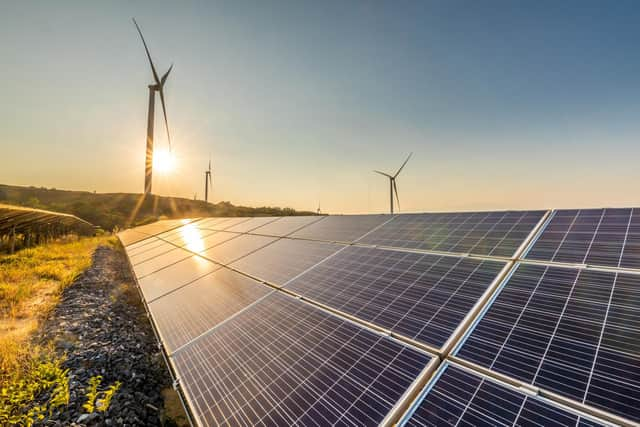Energy company expects Derbyshire renewables to power 419,000 homes by 2050
and live on Freeview channel 276
A new report from electricity provider Western Power Distribution (WPD) predicts that across the county solar generation will reach 998 megawatts (MW) by the middle of the century, and wind generation will reach 183MW – equivalent to 292,000 and 127,000 homes a year respectively.
Paul Jewell, a system development manager for the company, said: “At a time when all eyes are on COP26, people in Derbyshire are already taking their own steps to reduce their impact on the environment and to minimise climate change.”
Advertisement
Hide AdAdvertisement
Hide AdBy 2030, the county is expected to reach 338MW of solar generation and 30MW of wind power, equivalent to 119,972 homes a year in total.


Derbyshire Dales is expected to make the biggest contribution to renewable energy production out of eight county districts covered by WPD’s network.
Its solar capacity is predicted to reach 68.4MW by 2030, and 182MW by 2050, while wind capacity will go from 17.9MW to 70.2MW over the same period.
Of course, the green transition will also place new forms of demand on the county’s power network.
Advertisement
Hide AdAdvertisement
Hide AdWPD is forecasting that it will need to connect infrastructure for more than 556,000 electric vehicles and 380,000 heat pumps to its Derbyshire network by 2050 – 71,140 and 32,850 in the Dales alone.
The company has recently launched a new, streamlined process for connecting low carbon technologies (LCTs) – for both generation and consumption – which means ‘same day’ or ‘next day’ connection for most applications, making it easier for customers to reduce their carbon footprint.
Paul said: “We’re working hard to ensure that, as more people make the switch, they can connect as quickly and easily as possible.
“We are also working with community and local energy projects and have pledged to reduce our own impact and be a net zero business by 2028. It’s important that we lead by example on decarbonisation and deliver a greener, fairer energy future for everyone in Derbyshire.”